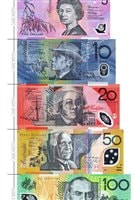It seems Canada’s transition to polymer banknotes is contributing to a 23% increase in operating costs at the Bank of Canada.
The Bank’s second-quarter report is showing that costs are up by $114 million dollars ( to $606 million) compared to last year.
And half that cost, about $50 million, is because making the plastic bills is more expensive than the former cotton based notes.

The bank says the extra costs will be recovered though as the plastic notes are expected to last 2.5 times longer.
Canada has already introduced $100, $50 and $20 notes and the launch of new $5 and $10 bills is expected later this year which will complete the switch to all plastic notes.
Australia was the leader in creating polymer notes and made a complete switch back in 1996.
Several countries have already switched completely to the plastic bills, including New Zealand, Bermuda, Romania, and Vietnam, and various other commemorative polymer bills are in circulation in about 22 other countries.







For reasons beyond our control, and for an undetermined period of time, our comment section is now closed. However, our social networks remain open to your contributions.